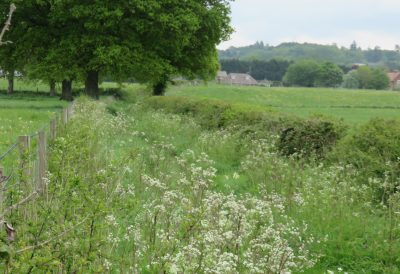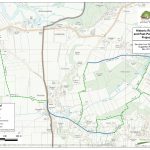Stuckton Iron Works Trail
Historic Routes and Past Pathway aims to create five new self-guided walking trails in and around the New Forest National Park. This is one of the five suggested trails.
To help select which suggested trails to progress volunteer researchers took a quick look into the history of the areas and produced a Summary of Historical Potential for each trail. This one was researched and drafted by Volunteer Researcher David Butterfield.
The trail starts at Fordingbridge Cemetery, which contains the grave of post-impressionist artist Augustus John OM RA. John moved to Fryern Court, Fordingbridge, in 1927 and lived there until his death in 1961.
After passing behind Fordingbridge Cemetery, the path passes the site of a Bronze Age cemetery. The footpath then joins a wider track and turns left towards the village of Stuckton. This track is very likely to have been used by smugglers bringing contraband ashore at Christchurch Bay and carrying it across the forest to Fordingbridge. The town was a major hub of the free traders (smugglers) in the late 18th Century and was the scene of many a battle between local free traders and customs men.
The trail then joins the road in Stuckton almost opposite the site of the famous Stuckton Iron Works. The Iron Works were started in 1790 by Thomas Sheppard and taken on by his son William in 1804. William developed the business and built a foundry in 1807, which supplied castings for agricultural implements.
A Cornish steam engine was used for power and a 50-foot chimney built, which must have been a local landmark. It is rumoured that the first portable steam traction engines were built here in the early 1800s, but this cannot be verified.
In 1830 the foundry was targeted by Luddite rioters during widespread machine wrecking by agricultural workers. The foundry was only saved from destruction by the timely intervention of the local militia. The works were sold to Armfield Engineering of Ringwood in 1872, and the foundry closed in 1908, although the site continued in use as a supplier of agricultural tools and equipment in the 1950s.
On joining Stuckton Road, the trail turns right towards Frogham. Immediately on the right is Brooklands Farm, where an archeological dig was carried out in 2015. A few pottery shards dating from 11th to18th Century and a possible fragment of Roman greyware were found, however, it was concluded that there was very little sign of population.
The trail turns left onto footpath 735, crosses Ditchend Brook on a narrow footbridge, climbs up alongside Broadhill Wood and joins Broadhill Lane. On the right is a large house called The Merrie Thought. This was built for a Mrs Hulse around 1900 when, because of better roads and railways, wealthy people started to retire to the New Forest.
The trail then turns right along Broadhill Lane, which is a continuation of the old smugglers trail followed earlier. This route could also have been used as a drove track for moving animals from pastures by the River Avon up onto the open forest.
On joining the road, the trail then turns right down the hill. After crossing the ford, we then join the footpath alongside Ditchend Brook along footpath 732. To the right of the footpath are the remains of two watercress beds which are shown on the O.S. map of 1908. Research can find no local knowledge of these and, as watercress prefers to grow in clear chalk streams, they are unlikely to have been successful.
On the left are a row of very old pollarded oak trees which may date from the time when pollarding was used to provide wood for fuel and building, before its later use providing ships’ timbers.
The trail then turns left, passes some very old (possibly 16th Century) thatched cottages and joins the road at the bottom of Frogham Hill.
Here the trail turns right and we re-trace our steps back to the cemetery car park. A lot of the large Victorian houses have quite elaborate iron gates, which were very likely to have been made at the nearby foundry.
Get involved
This route is a preview of one of five new self-guided walks we are developing along existing rights of way in and around the New Forest National Park.
If you’d like to contribute memories or stories to this trail, get in touch with Gareth Owen on 01590 646652 or Gareth.Owen@newforestnpa.gov.uk.




